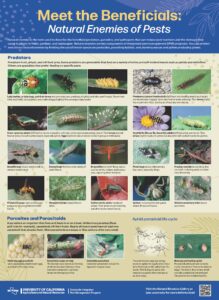Bad Insects
Do you ever spot insects or pests in your yard, especially in your trees, and wonder if they’re doing any harm? Well, there are many resources that can help you identify pests and learn which ones are most prevalent in which species of tree.
The University of California has compiled a list of common, scientific and family names for ornamental trees and shrubs. You can find the trees in your yard and then click on a link to all kinds of pests and diseases they’re susceptible to. Click here to see the list.
And Good Insects
Are there any proactive steps you can take to combat pests and diseases? Glad you asked! Yes, you can take steps to attract “beneficial insects.” These insects are natural enemies of garden pests and they help keep your yard’s ecosystem in balance. Take green lacewings, for example. These are predators that go after a variety of pests. Adults eat nectar and pollen and the larvae feeding on mites, eggs and small insects such as aphids and thrips. Lady beetles are another beneficial insect. They prefer aphids but also eat whiteflies and other soft-bodied insects.
The trick is to invite them into your yard by choosing plants that provide them shelter, pollen and nectar. You should also be aware of which pesticides kill them and avoid using those.
Click here to download a poster of Beneficial Enemies of Pests.


